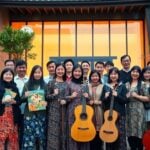When embarking on the journey of writing a grant proposal, it is crucial to first understand the audience that will be evaluating your submission—namely, the grant reviewers. These individuals are often experts in their respective fields, tasked with the responsibility of assessing numerous proposals within a limited timeframe. Their perspectives are shaped by a combination of professional experience, institutional priorities, and the specific criteria outlined in the grant guidelines.
Therefore, it is essential to recognize that grant reviewers are not merely looking for innovative ideas; they are also seeking clarity, feasibility, and alignment with the funding agency’s mission. By understanding their expectations and motivations, you can tailor your proposal to resonate with their values and priorities. Moreover, grant reviewers often operate under significant pressure, balancing their roles as evaluators with their own professional commitments.
This reality underscores the importance of presenting your ideas in a clear and concise manner. Reviewers appreciate proposals that are well-organized and easy to navigate, as this allows them to quickly grasp the essence of your project. Additionally, they are likely to favor proposals that demonstrate a strong understanding of the field and articulate a compelling vision for the future.
By putting yourself in the reviewers’ shoes, you can anticipate their questions and concerns, ultimately crafting a proposal that not only meets their expectations but also stands out in a competitive landscape.
Key Takeaways
- Grant reviewers are looking for proposals that align with their organization’s mission and goals, so it’s important to understand their perspective and tailor your proposal accordingly.
- Crafting a compelling narrative involves clearly articulating the potential impact of your project and why it is important, relevant, and timely.
- Organizing your grant proposal with a clear structure helps reviewers easily navigate and understand the key components of your project.
- Strengthen your narrative by incorporating relevant data and evidence to support your claims and demonstrate the feasibility and potential success of your project.
- Engage grant reviewers by utilizing storytelling techniques to make your proposal more compelling, memorable, and impactful.
- Seek feedback and be open to revisions to refine your narrative and maximize its impact on grant reviewers.
Identifying the Impact: Crafting a Compelling Narrative
The Power of Storytelling
At the heart of any successful grant proposal lies a compelling narrative that articulates the potential impact of the proposed project. This narrative should not only highlight the significance of the research or initiative but also convey a sense of urgency and relevance to current societal challenges.
Defining the Problem and Its Significance
To achieve this, it is essential to clearly define the problem your project aims to address and explain why it matters. By grounding your proposal in real-world issues, you can create a sense of connection with the reviewers, who are often motivated by a desire to support projects that contribute to meaningful change.
Articulating Anticipated Outcomes and Impacts
In addition to outlining the problem, it is equally important to articulate the anticipated outcomes of your project. Reviewers want to see a clear pathway from your proposed activities to tangible results. This involves not only describing what you plan to do but also explaining how these actions will lead to measurable impacts. Utilizing specific examples and case studies can help illustrate your points and make your narrative more relatable.
Establishing a Clear Structure: Organizing Your Grant Proposal

A well-structured grant proposal is essential for guiding reviewers through your narrative and ensuring that they can easily follow your line of reasoning. The organization of your proposal should reflect a logical progression from the introduction of the problem to the proposed solution and anticipated outcomes. This clarity not only aids comprehension but also demonstrates professionalism and attention to detail—qualities that reviewers value highly.
A typical structure might include sections such as an executive summary, background information, project objectives, methodology, evaluation plan, and budget justification. Each section should build upon the previous one, creating a cohesive narrative that flows seamlessly. In addition to a logical structure, it is important to use headings and subheadings effectively to break up text and guide reviewers through your proposal.
This visual organization can enhance readability and make it easier for reviewers to locate key information quickly. Bullet points and tables can also be employed strategically to present data or summarize complex information succinctly. By prioritizing clarity in both content and format, you can create a proposal that not only conveys your ideas effectively but also respects the time constraints faced by grant reviewers.
Incorporating Data and Evidence: Strengthening Your Narrative
To bolster your narrative and lend credibility to your proposal, it is imperative to incorporate relevant data and evidence throughout your writing. This may include statistics that highlight the scope of the problem you are addressing, research findings that support your proposed methodology, or case studies that demonstrate successful outcomes from similar projects. By grounding your claims in empirical evidence, you can enhance the persuasive power of your narrative and reassure reviewers that your project is based on sound principles and practices.
Furthermore, it is essential to present this data in a way that is accessible and engaging for reviewers. Rather than overwhelming them with dense tables or lengthy explanations, consider using visuals such as graphs or infographics to convey key points succinctly. This approach not only makes your proposal more visually appealing but also allows reviewers to grasp complex information at a glance.
By skillfully integrating data into your narrative, you can create a compelling case for your project while also demonstrating your expertise in the field.
Utilizing Storytelling Techniques: Engaging Grant Reviewers
Storytelling is a powerful tool in grant writing that can transform a standard proposal into an engaging narrative that captivates reviewers. By framing your project within a story arc—complete with characters, conflict, and resolution—you can create an emotional connection with your audience. This technique allows you to humanize your project by illustrating how it will impact real people or communities.
For instance, sharing testimonials from individuals who have been affected by the issue at hand can provide a personal touch that resonates with reviewers on an emotional level. Additionally, effective storytelling involves creating vivid imagery that helps reviewers visualize the potential outcomes of your project. Descriptive language can paint a picture of what success looks like, allowing reviewers to imagine the positive changes that will result from their funding decision.
By weaving together facts with narrative elements, you can create a compelling case for support that not only informs but also inspires action. Ultimately, storytelling techniques can elevate your proposal from a mere presentation of facts to a dynamic narrative that engages reviewers and compels them to advocate for your project.
Seeking Feedback and Revisions: Refining Your Narrative for Maximum Impact

Seeking Feedback from Experienced Colleagues
Seeking input from colleagues or mentors with grant writing experience can provide valuable insights into areas for improvement. These individuals can offer fresh perspectives on your narrative structure, clarity of ideas, or overall persuasiveness, helping you identify weaknesses and opportunities for growth.
Embracing Constructive Criticism and Revision
By embracing constructive criticism, you can identify and address weaknesses in your proposal before submission. Revising your proposal multiple times allows you to hone your language, eliminate jargon or overly complex phrases, and ensure that every word serves a purpose. This iterative process is crucial for creating a clear, concise, and engaging narrative.
Simulating the Review Process and Anticipating Feedback
Conducting mock reviews with peers can simulate the actual review process and help you anticipate potential questions or concerns that may arise during evaluation. This practice allows you to refine your narrative, address potential weaknesses, and increase your chances of securing funding. Ultimately, investing time in feedback and revisions will enhance the quality of your proposal and increase its chances of success.
For those interested in enhancing their grant writing skills, particularly in crafting narratives that resonate with grant reviewers, it might be beneficial to explore specific opportunities where these skills can be directly applied. One such opportunity is the Isolated Communities Resilience Grant in Australia, which supports projects aimed at enhancing the resilience of remote and isolated communities. Understanding the specific requirements and focus areas of this grant can provide practical insights into how to effectively tailor your narrative to meet the expectations of grant reviewers. You can find more details about this grant and how to apply by visiting Isolated Communities Resilience Grant – Australia.
FAQs
What is a narrative in the context of grant writing?
A narrative in the context of grant writing is a compelling and coherent story that conveys the purpose, impact, and significance of the proposed project to grant reviewers. It is a crucial component of a grant application that helps to engage and persuade the reviewers.
Why is it important to craft a narrative that resonates with grant reviewers?
Crafting a narrative that resonates with grant reviewers is important because it can significantly impact the success of a grant application. A compelling narrative can capture the attention of reviewers, convey the value of the proposed project, and increase the likelihood of securing funding.
What are some key elements of a narrative that resonates with grant reviewers?
Key elements of a narrative that resonates with grant reviewers include a clear and concise description of the project, a compelling rationale for the project, a demonstration of the project’s potential impact, and a strong connection to the funder’s priorities and goals.
How can I ensure that my narrative resonates with grant reviewers?
To ensure that your narrative resonates with grant reviewers, it is important to thoroughly understand the funder’s priorities and goals, tailor the narrative to align with those priorities, use compelling language and storytelling techniques, and provide evidence to support the project’s feasibility and potential impact.
What are some common pitfalls to avoid when crafting a narrative for grant reviewers?
Common pitfalls to avoid when crafting a narrative for grant reviewers include using jargon or technical language that may be unfamiliar to the reviewers, providing vague or unsubstantiated claims about the project’s impact, and failing to clearly articulate the significance of the project to the funder’s mission and goals.


























